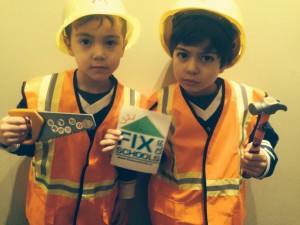Each year, the Ministry of Education seeks input from various stakeholders before determining funding for school boards for the upcoming school year. The Fix Our Schools campaign has made a written submission in each of the past two years.
Here is the cover letter, which provides an overview for you of what Fix Our Schools submitted to the Ministry in November, 2015 for use in determining funding for school boards for the 2016/17 school year:
Fix Our Schools is a grassroots, non-partisan, parent-led campaign asking for safe, well-maintained Ontario public school buildings that are funded as an integral part of our public infrastructure – on par with transit.
All 72 publicly funded School Boards in the province face capital repair backlogs, for a total of over $15-billion of disrepair in Ontario schools. The $11-billion in capital grants to School Boards over ten years is insufficient to address this unacceptable disrepair. New funding solutions must be found. Please give immediate consideration to:
- Revising O. Reg. 20/98 to allow all School Boards to access EDCs and use EDC money for repairs, capital projects or land purchase
- Allocating some of the promised new federal infrastructure funding to increase investment in repairing and rebuilding Ontario’s public schools
- Allocating the capital costs of maintaining school buildings and associated green spaces used as Community Hubs, in proportion to usage by various public and community entities
The 2-million children who attend Ontario public schools deserve to have safe, well-maintained buildings; as do the countless children who attend childcare/early learning programs in these same schools; the adults who work every day in these buildings; and the community members who rely upon these buildings as important Community Hubs.
We trust that Kathleen Wynne’s provincial government will take the lead in working together with School Boards, Municipalities, other Ministries, and the Federal Government to find the funding solutions needed to Fix Our Schools.

